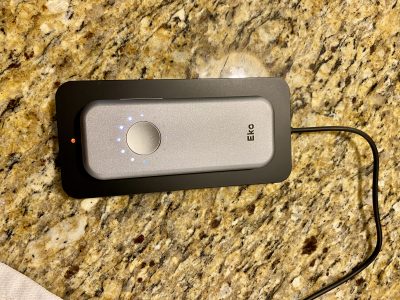Alerted by Sleepless in Midland, I read this Popular Science | Philips HeartStart Home Defibrillator article.
An AED (Automatic External Defibrillator) is a device which, when correctly applied to an unconcious victim, analyses their heart rhythm, and if it senses a ‘shockable’ rhythm it delivers a potentially lifesaving jolt to the heart, checking again, etc.
Philips Medical is a maker of excellent medical devices, though I have no personal knowledge of their AED’s. AED’s are now in most airports, in a lot of convention centers, sports complexes, on first-responder fire engines, and some police cars. (The defibrillators in ambulances are manual, as the Paramedics are trained to read the rhythms on their own).
AED’s do save lives. However, they are an answer to a very very narrow cause of sudden death, those people who sustain a Ventricular Tach (heart beating abnormally, and too fast, not pumping blood) or a Ventricular Fibrillation (heart quivering, not beating at all) arrest. If your patient has one of those, this will help, though survival to leave the hospital is still low (there’s a lot of heart damage before this kind of arrest). (An exception to the large damage argument for those who are electocuted, I suppose).
Unfortunately, the vast majority of people who collapse, even from heart attacks, wouldn’t benefit from this shock. They may benefit from CPR, but, again, usually the damage has been done.
As for a home AED, I wouldn’t spend the money. There are people who are naturally prone to these dysrhythmias (abnormal heart rhythms), but we now have implantable defibrillators, like pacemakers, for those folks. I suppose, then, the medically justifiable market for this device would be people prone to Vtach/fib arrest who are either awaiting an implantable defibrillator (countries with waiting lists and without a hungry plaintiffs’ bar), or those who refuse the implantable defib but still want to live.
This is marketing run amok, in my opinion.



